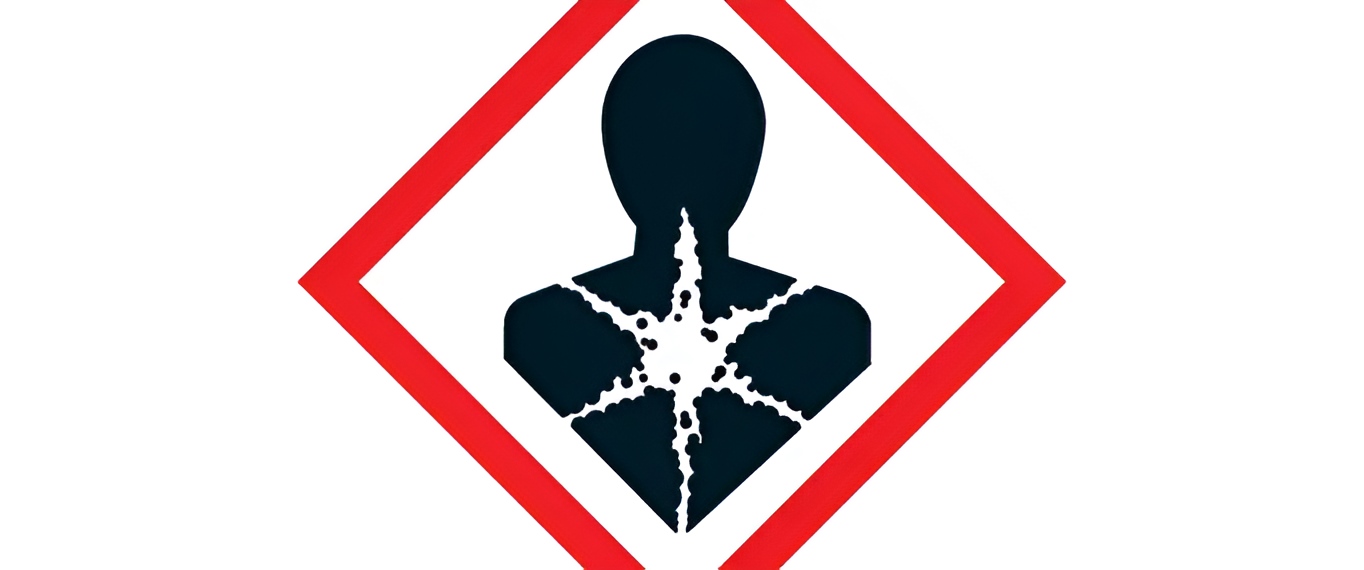What are the requirements for regulatory compliance in cosmetics in Europe and the UK?
The EC Regulation 1223/2009, along with subsequent amendments, (click here to access the consolidated version of the EC Regulation 1223/2009) sets forth the requirements that cosmetic products must meet in order to ensure consumer health protection and provide adequate information. This regulation also establishes restrictions on the substances used in cosmetics and outlines minimum labelling requirements.
In the UK, following the Brexit transition on January 1, 2021, a separate regulation for cosmetics was introduced. The UK Cosmetics Regulation applies to cosmetic products sold in England, Scotland, and Wales. However, for products placed on the market in Northern Ireland, the EU Regulation (EC) 1223/2009 on cosmetics continues to be applicable.
We recommend you also read our detailed article on product labelling of cosmetics to get a better understanding of the requirements.
What is the regulatory body for cosmetics in Europe?
In Europe, the regulation of cosmetics is overseen by the European Union. The specific regulation governing cosmetics is known as Regulation (EC) 1223/2009, which was established to simplify procedures, streamline terminology, reduce administrative burdens and ambiguities, and strengthen the regulatory framework to ensure a high level of protection for human health. This regulation replaced the previous directive, Directive 76/768/EC, which had been in place since the 1970s.
A directive is a binding and obligatory legislative act that sets a goal for all EU countries to achieve. However, each country has the flexibility to determine how to achieve the set objective by transposing the directive into national law. This means that methods and approaches to regulation can vary from state to state. Therefore, a unified community regulation that encompasses all European countries was necessary to address all aspects related to cosmetics.
What is the Cosmetic Product Safety Report (CPSR)
The CPSR, which stands for Cosmetic Product Safety Report, is an essential component of the regulatory requirements for selling cosmetic products in Europe and the United Kingdom. It is part of a comprehensive set of requirements that must be fulfilled. The four key elements necessary for regulatory compliance in cosmetics are as follows:
- Cosmetic Product Information File (PIF): This file contains all the relevant information about the cosmetic product, including the CPSR.
- Compliant Label: The product must have a label that meets the regulatory standards. The label may include various claims related to the product, along with supporting evidence.
- Notification to CPNP and SCPN: If you intend to export and sell your products in Europe and the United Kingdom, you must notify the European CPNP (Cosmetic Products Notification Portal) and the English SCPN (Submit Cosmetic Product Notifications) portal.
- Responsible Person: It is essential to have a designated Responsible Person located in the EU and/or the UK if your cosmetic products are also sold in the UK.
Compliance with all four points is crucial, as failure to meet any one of these requirements means that the cosmetic product is not in accordance with the law and cannot be sold.

What is the Product Information File (PIF)
According to European Regulation (EU Reg. n° 1223/2009) on cosmetics, the individual responsible for placing a cosmetic product on the European market must ensure its safety for human health under normal or reasonably foreseeable usage conditions. This obligation aims to provide maximum protection for consumers.
To meet this requirement, the responsible person must create or have created on their behalf a Product Information File (PIF) containing detailed documentation about the cosmetic product being marketed. The PIF must be retained by the responsible person for 10 years after the last batch of cosmetics is placed on the European Union market. Furthermore, it should be readily available to competent authorities upon request. The regulation allows the PIF to exist in any format, including electronic, and it is not mandatory for the physical copy to be present at the address mentioned on the product label.
The PIF should be prepared in the language of the country where the product is sold. In the case of international sales, it should be presented in a language understood by the authorities in the respective jurisdiction, usually English.
The PIF can be maintained in either paper or electronic format and must be regularly updated to reflect changes in formulation, comply with regulatory advancements, and record any undesirable events resulting from the use of the cosmetic product. These updates should be documented within the PIF.
The cosmetic PIF model consists of:
- Product description that allows the documentation to be unambiguously correlated to the product;
- Product Safety Report (Part A and Part B);
- Description of the manufacturing method and declaration of compliance with GMP;
- Any evidence of effectiveness of the effects claimed by the product;
- Any data concerning animal experimentation.
The information encapsulated within the Product Information File (PIF) is confidential. The public and consumers can only access certain elements of the PIF, as stipulated by Article 21 of EU Regulation 1223/2009, to ensure both the health and safety of the consumer and the intellectual property protection of the manufacturer.
The PIF’s most critical and substantial component is undoubtedly the product safety report. This report is divided into two sections: Part A, which addresses the safety information about cosmetic products, and Part B, focusing on the safety assessment of these products.
Part A requires details about the qualitative and quantitative composition of the products, including the products’ physical-chemical characteristics and the corresponding stability studies. This section also evaluates microbiological safety, supporting test data, any potential traces and impurities, packaging details, and the normal and reasonably foreseeable usage of the product.
Moreover, considerations about the application site of the product, the extent of the area to which it is applied, and the amount of product to be used should be included. Instructions about usage frequency and method must also be part of this documentation.
Finally, the toxicological profile of the included substances is assessed, with particular focus on local toxicity effects such as skin and eye irritation. Photo-induced toxicity is also considered, particularly in cases where the product might absorb UV radiation. Lastly, the potential undesirable effects of the product are evaluated.
What tests are required for cosmetics in the EU?
Every cosmetic product that is introduced into the market must undergo mandatory safety tests to ensure its compliance with strict chemical, physical, microbiological, formulation, and toxicological requirements. Prioritising consumer and end-user safety is always of utmost importance.
Following the formulation of the product, which involves a thorough regulatory assessment of each individual raw material and the finished product, tests are conducted in cosmetic laboratories. These tests, if successfully passed, guarantee the product’s safety.
There are three essential and obligatory tests that every cosmetic product must undergo before it can be made available on the market.
• Microbiological analysis (except for the ones with low microbiological risk)
• Stability Test + Compatibility Test
• Challenge Test (under ISO 11930 :2019 standard) or In-USE Test ; this could be avoided in case of low microbiological risk : the ISO standard 29621 :2017 defines this kind of products)
Learn more by reading our article on stability tests.

What about animal testing and cosmetics?
In Europe, it is forbidden to sell or distribute cosmetics that have been tested on animals. Rogue manufacturers or importers who attempt to market banned ingredients face significant fines. Additionally, now 45 countries worldwide have implemented legal regulations to prohibit the trade of cosmetics that have undergone animal testing.
To learn more about this topic and gain further insights, we recommend reading our comprehensive article on animal testing.
Does the cosmetics manufacturer have strict requirements to follow?
The manufacturer is indeed subject to strict requirements that they must adhere to. Article 8 of Regulation nr. 1223/09 outlines these requirements. Specifically, the manufacturer must follow the cosmetic Good Manufacturing Practices (GMPs), which are the set of standards ensuring compliance with all the mandatory aspects of the Regulation.
The international standard for GMPs is ISO 22716:2007. This standard provides detailed guidelines for the production, control, storage, and shipment phases of cosmetic products. These guidelines must be followed not only by full-service cosmetics manufacturing companies but also by those involved in specific phases of bringing a cosmetic product to the market, such as labelling or packaging stages.
To comply with these standards, the company must establish internal procedures and processes that guarantee the quality of the cosmetic products as defined by the EU cosmetic regulation. Many companies choose to obtain GMP certifications from third-party organisations, which serve as a widespread tool for demonstrating their compliance with GMP standards. Additionally, these certifications help companies maintain control over their quality management systems and foster a continuous improvement approach to their activities.

What are the labelling requirements for cosmetic products in Europe?
The label of a cosmetic product serves as a means to provide information to the final consumer. Similar to food or medicines, cosmetic labels are subject to specific rules outlined in Article 19 of EC Regulation no. 1223/2009.
The mandatory information that must be included on the label is as follows:
- Name or business name and complete address of the responsible person. If multiple addresses are indicated on the label, it is necessary to highlight the address where the documentation containing information about the product is readily available to competent authorities.
- The country of origin for imported cosmetic products.
- The nominal content of the product at the time of packaging, expressed either by weight or volume. Some exceptions to this requirement exist, such as for single doses, packaging of less than 5 grams or 5 millilitres, or unit packaging where indicating the weight is not significant. In such cases, it is necessary to mention the number of pieces contained in the packaging.
- The date of minimum duration refers to the date until which a cosmetic product, when stored under appropriate conditions, will continue to perform its intended function and remain compliant with safety requirements. The determination of this date is based on stability tests conducted on the product, including its final packaging.
If the stability tests indicate that the minimum duration is less than 30 months, the label should include the symbol ![]() or indicate “Use preferably by:” followed by the specific date expressed in the format of month and year or day, month, and year. If necessary, the label should also provide information on the storage conditions that must be observed to ensure the product’s shelf life.
or indicate “Use preferably by:” followed by the specific date expressed in the format of month and year or day, month, and year. If necessary, the label should also provide information on the storage conditions that must be observed to ensure the product’s shelf life.
For products with a minimum duration exceeding 30 months, indicating the date of minimum duration is not necessary. Instead, the label should include information about the period after opening (PAO) during which the product can be safely used without any harmful effects for the consumer. This information is conveyed using the symbol ![]() or the acronym “PAO” followed by the indication in months or years.
or the acronym “PAO” followed by the indication in months or years.
There are some exceptions to the requirement of reporting an expiration date or PAO. These exceptions apply to single-dose products, products packaged in a way that prevents contact between the cosmetic and the surrounding environment (such as aerosols), and products for which the manufacturer certifies that the formulation is designed to prevent any risk of deterioration upon opening of the container.
- Special precautions for use as outlined in the Technical Annexes of Regulations III to VI. Additionally, any specific precautions applicable to cosmetic products intended for professional use should be indicated.
- The label must include a batch number or a reference that enables the identification of the cosmetic product. If there is limited space on the label, the lot number can be indicated solely on the packaging.
- Function of the cosmetic product: Unless the function is evident from its presentation, the label should specify the function or purpose of the cosmetic product.
- The ingredients should be listed using the names specified in the glossary of ingredients (decision 2019/701).
To delve further into this topic and gain a more comprehensive understanding, we invite you to read our article specifically focused on the labelling of cosmetic products.
What are the other regulations that should be complied with on cosmetics labels?
There are numerous regulations that intersect and must be adhered to when it comes to labelling a cosmetic product for full compliance once it is made available to consumers.
Among others, a label should also comply with the Metrology Direct – EU No 76/211, Unfair commercial practices – EC No 29/2005 or the Claims regulation – EU No 655/2013.
It is important to note that additional regulations, such as packaging and waste regulations, may also apply.
For example, please see the labelling requirements in Italy article and the labelling requirements in France.
What is the Cosmetic Product Notification Portal (CPNP)?
As established by Article 13 of EU Reg. 1223/2009, before introducing a cosmetic product to the European market, the responsible person is required to submit relevant product information in electronic format to the European Commission.
The CPNP (Cosmetic Product Notification Portal) is the European platform used for notifying cosmetic products. It allows the responsible person or their authorised delegate to easily transmit all the required information about the product.
The CPNP serves as a centralised database that contains notifications for all cosmetic products available on the European market, and it is accessible to all member states of the European Union.
What happens in the case of non-compliance with cosmetics regulations?
In the event of non-compliance with regulations, legal consequences ensue. Authorities primarily ensure compliance through the following methods:
- Customs Inspection: As products enter the market, officials verify the presence of a designated Responsible Person, product notification on the official portal, and adherence to labeling standards.
- Portal Audits: Local authorities perform random checks on the portals, contacting the Responsible Person for specific product details and requiring a timely response with the necessary documentation.
- Market Surveillance: Inspectors carry out random evaluations at retail locations. The Responsible Person must then provide the complete Product Information File (PIF) and Cosmetic Product Safety Report (CPSR) within a designated timeframe.
To learn more about how inspections are conducted, please read our article on EU authorities’ regulatory inspections.
Who can become the Responsible Person?
To comply with European regulations for cosmetics, it is necessary to designate a Responsible Person. Manufacturers have the flexibility to choose who will fulfil this role for their products. The Responsible Person can be any individual who meets the following criteria:
- They are registered and reside in the European Union (or in the UK if the products are sold there).
- They have been given a proper mandate by the manufacturer.
- They hold a position that enables competent authorities to access the Product Information File (PIF) at the address specified on the cosmetic products by the Responsible Person.
In many cases, the Responsible Person is the manufacturer itself or one of its subsidiary companies.

Does a cosmetics product need to be registered if it’s only sold online?
A product sold through online channels is still subject to the same regulations as products sold through traditional channels. Therefore, all the regulations mentioned earlier are fully applicable regardless of the sales channel.
This article covers the main points of the Cosmetics Regulation, which are explored in various articles. For a concise summary of the key regulations applicable to cosmetic products, please refer to this link.
If you have any further doubts or questions, feel free to contact us. Our team is here to assist you in ensuring your product is compliant and marketable without any issues.



